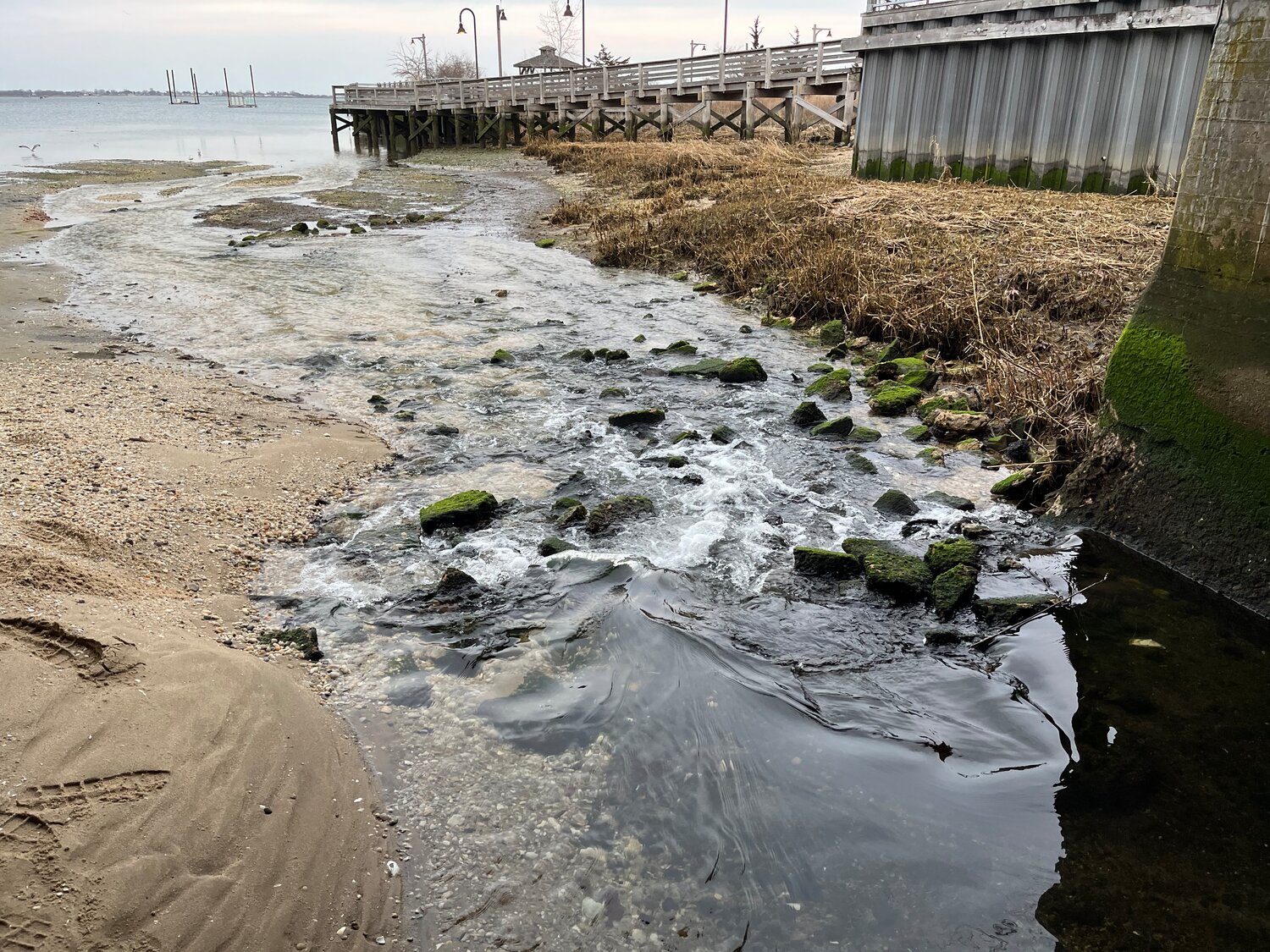Town of Oyster Bay receives environmental grant
Work to begin on green infrastructure project
In the coming months, Oyster Bay residents and visitors to the hamlet looking out over the harbor can expect to see floating barges of plants as part of a new project by the town to mitigate stormwater runoff and work in tandem with the town’s ongoing oyster rehabilitation projects.
The Town of Oyster Bay was recently awarded a $435,000 grant from the New York State Environmental Facilities Corporation to spearhead a transformative project aimed at enhancing water quality, implementing green infrastructure, and mitigating stormwater runoff in Oyster Bay Harbor.
Town Supervisor Joseph Saladino said the grant was just the most recent part of Oyster Bay’s ongoing efforts to protect the local environment.
“We applied for this knowing that restoring the pristine waters of Oyster Bay Harbor is extremely important, and it’s one of the many steps that we have taken and will be taking going forward to make sure that we get our harbor to the best it’s ever been,” Saladino said. “This project is specifically about ensuring that runoff that contains some contaminants from the roadway is filtered before it reaches Oyster Bay Harbor.”
The grant-funded project will facilitate comprehensive green infrastructure improvements at Beekman Beach and the Mill River Outfall, addressing longstanding water quality issues plaguing the harbor. A key focus of the initiative is the installation of nine floating wetlands, spanning the Mill River Outfall, along with 1,200 linear feet of wetland restoration and the establishment of oyster reefs.
These measures are designed to mitigate stormwater runoff originating from a sprawling, multi-jurisdictional watershed spanning approximately 1850 acres.
“When you improve a natural resource, you protect its sustainability,” Saladino said. “The harbor is very important to our natural resources, it’s very important to the sustainability of the marine environment, but it’s also very important to our local economy, and we want to continue to make sure that all of them thrive.”
The floating wetlands and oyster reefs will serve as natural filtration systems, effectively reducing excess nutrients, pollutants, and bacteria from stormwater runoff before it disperses throughout Oyster Bay Harbor, particularly nitrogen. Moreover, these innovative components showcase the potential of ecological systems to address water quality issues sustainably and practicality.
In addition to improvements at the Mill River Outfall, the project will advance community-oriented plans for green infrastructure enhancements at the two-acre beach parking lot. These enhancements, including porous pavers (a form of pavement which catches rainwater runoff), street trees, and bioswales (small strips of grass which catch and filtrate water before it can reach the shore), aimed to further mitigate pollution, increase groundwater recharge, and provide environmental education opportunities.
“We’re making sure that this project serves many purposes,” Saladino said. “We’re doing well by the public, we’re protecting the environment, but we’re also keeping in mind the taxpayers’ needs.”
The project’s significance extends beyond environmental considerations, with Saladino highlighting its potential to foster educational opportunities and community engagement.
Christine Suter, executive director of Friends of the Bay, expressed enthusiasm for the project’s potential impact, adding that the environmental organization would be supporting the town in this project and spreading awareness about its importance.
“What we’re going to be doing is providing support and possibly developing educational or outreach opportunities for students and community members to participate in learning about the project,” Suter said. “It’s exciting because this is going to be the first floating wetland project in Nassau County, and hopefully this can serve as an example for what can be done in neighboring bays such as Hempstead Harbor.”
Oyster Bay Harbor, renowned for its diverse marine life and ecological significance, has long grappled with the repercussions of stormwater runoff, resulting in the closure of shellfish harvesting and swimming areas. However, with the implementation of the comprehensive green infrastructure improvements outlined in the project, there is renewed hope for the harbor’s ecological restoration and long-term sustainability.
For more information on the project and ongoing environmental initiatives in Oyster Bay, visit OysterBayTown.com or FriendsOfTheBay.org.







